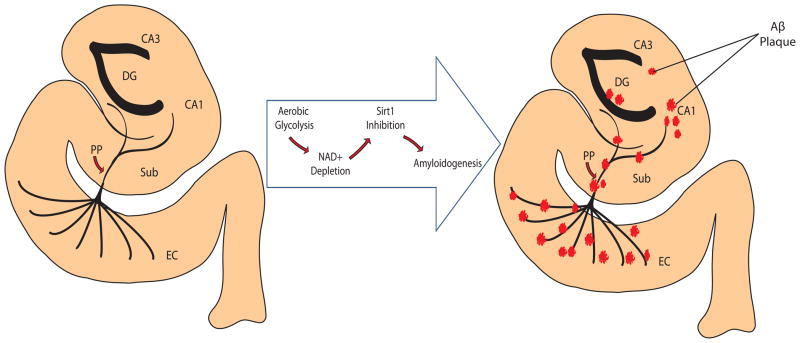Figure 3.
Progression of amyloidogenesis in parahippocampal region and hippocampal formation of mediotemporal lobe. The energy-demanding regions of the brain, most notably the entorhinal cortex (EC) of the parahippocampal region, resort to aerobic glycolysis as an alternate means of generating ATP. As a result, the NAD+ pool is reduced and the NAD+-dependent deacetylase Sirt1 becomes hypoactive. As Sirt1 has been recently demonstrated to increase α-secretase production (through RARβ deacetylation and subsequent ADAM10 transcription), the amyloidogenic phenotype becomes upregulated. That is, the reduced processing of AβPP through α-secretase (due to the reduction in α-secretase synthesis) is complemented by an increase in AβPP processing by β- and γ-secretases to yield Aβ peptides. An eventual accumulation Aβ into senile plaques occurs along the network of innervation as the degeneration spreads cortico-cortically.
*DG = Dentate Gyrus, EC = Entorhinal Cortex, Sub = Subiculum, PP = Perforant Path

